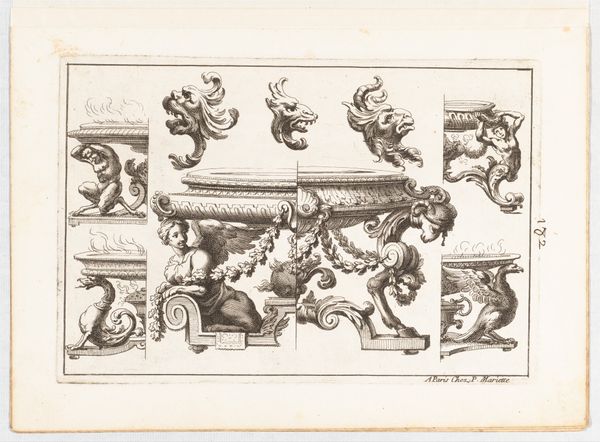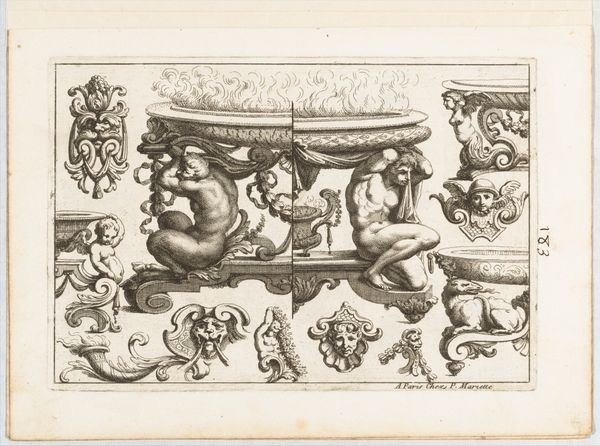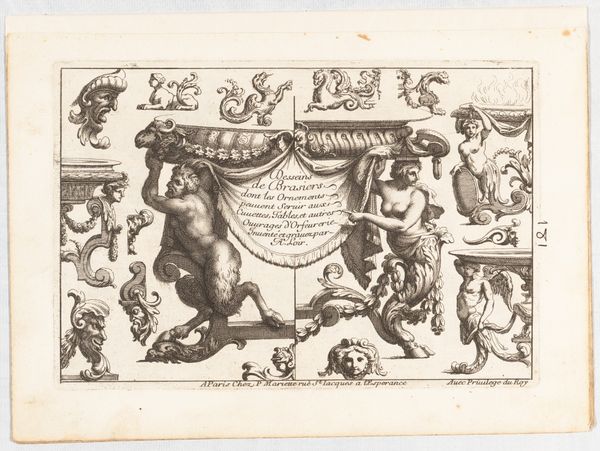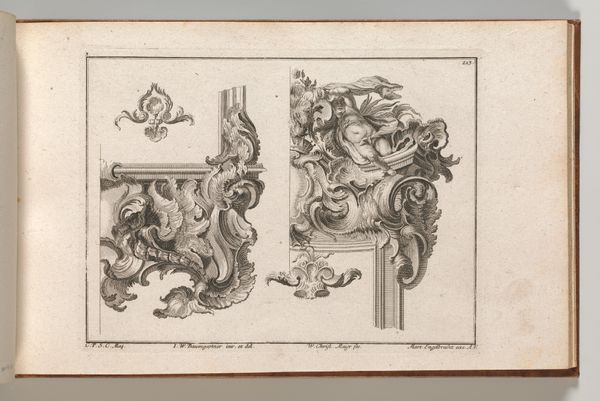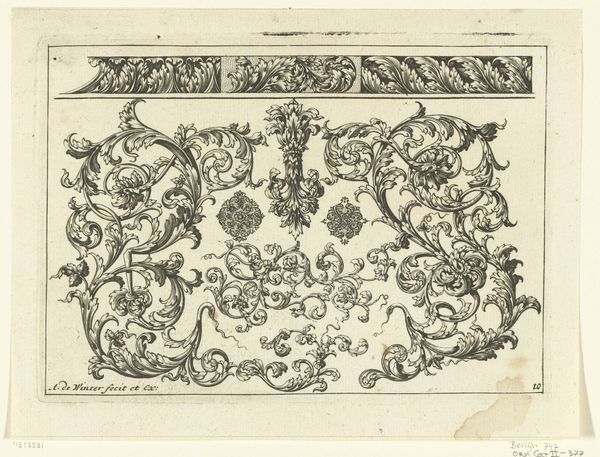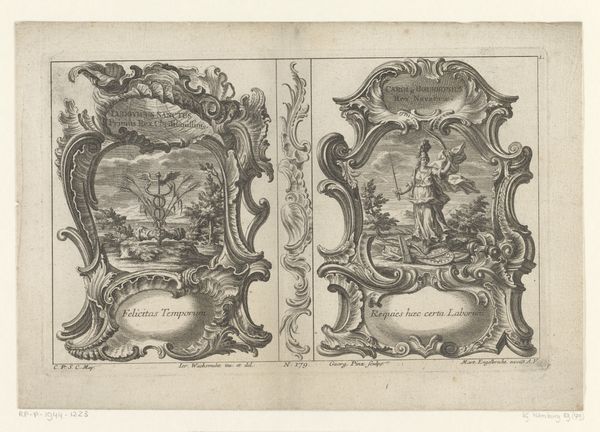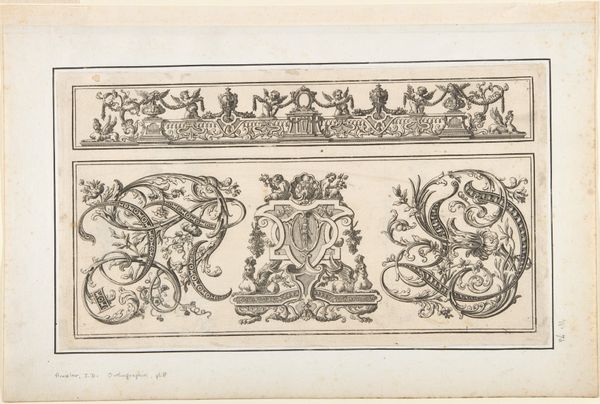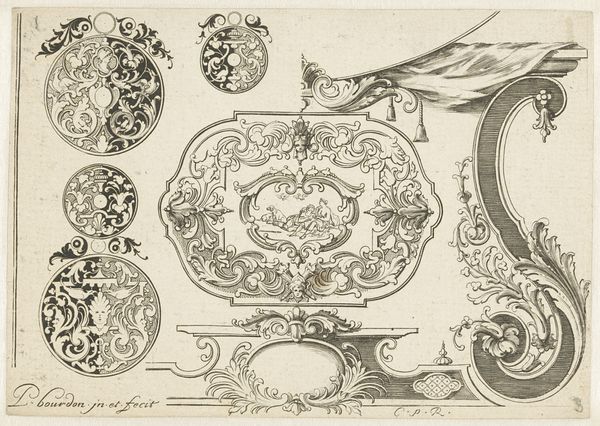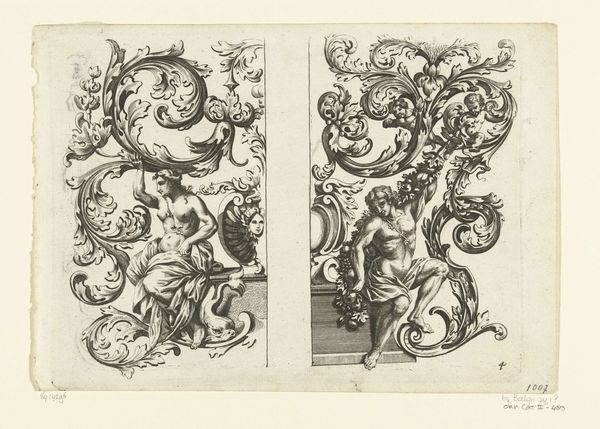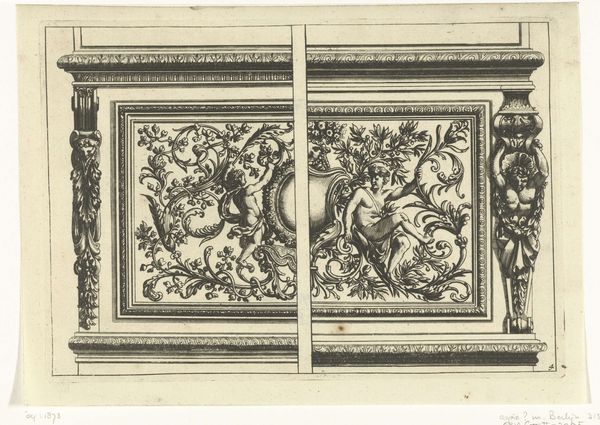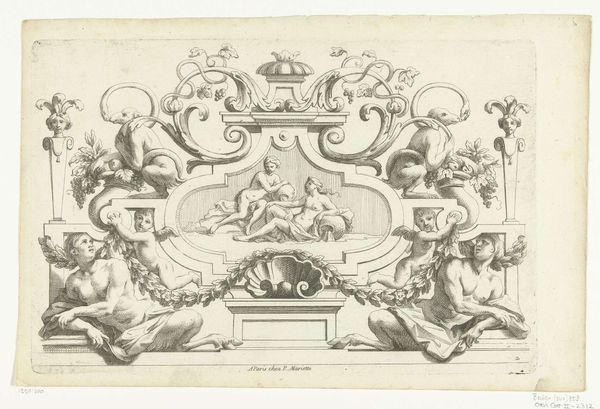
Desseins de Brasiers dont les Ornements peuuent Seruir aux Cuuettes, Tables, et autres Ouurages d'Orfeurerie, Plate 6 1660 - 1713
0:00
0:00
drawing, print, engraving
#
drawing
#
baroque
# print
#
history-painting
#
engraving
Dimensions: Plate: 6 1/4 × 9 5/16 in. (15.9 × 23.7 cm) Sheet: 7 11/16 × 10 15/16 in. (19.6 × 27.8 cm)
Copyright: Public Domain
Curator: This image titled “Desseins de Brasiers dont les Ornements peuuent Seruir aux Cuuettes, Tables, et autres Ouurages d'Orfeurerie, Plate 6” comes to us from Alexis Loir, and the print dates somewhere between 1660 and 1713. It resides here with us at the Metropolitan Museum of Art. Editor: Immediately, I see…controlled chaos. The stark monochrome and meticulously etched lines give this a very rigid appearance. The asymmetry in figures contrasts with very rigid ornament arrangements. Curator: Absolutely! Loir really wants to show off a vision of controlled luxury here. He offers us various ornamental details—figures and objects that goldsmiths might adapt for fireplace decor or tableware. You almost get a sample book feeling here. Editor: "Controlled luxury" sounds about right. There's a strong class element here too, no? Those muscular figures holding braziers look more burdened than ennobled by their positions, a not-so-subtle wink at the labor required to fuel elite lifestyles. And I do like this dichotomy in presentation too; it reminds me of very specific and structured Baroque visual representations. Curator: Interesting perspective on that Herculean figure there. I had only focused on the flamboyance of design instead. This work is not only beautiful on its own but becomes infinitely more beautiful when actually integrated with furniture. In fact, goldsmiths throughout Europe spread prints like this widely. Editor: This Baroque flair indeed circulated ideas widely, but also entrenched social hierarchies, wouldn’t you agree? By visually linking labor to luxury, it normalized inequity as part of the very design, making oppression quite literally an art form! Curator: Yes, a kind of Baroque social engineering through design. So how does your analysis shift your perspective on the work as a whole? Editor: Well, seeing it as a design blueprint is one thing, but acknowledging its deeper, systemic implications gives me pause. It compels me to consider the silent narratives etched into these flourishes—who benefits, who labors, and who's written out of the story altogether. Curator: For me, considering those labor dynamics opens up this entire new appreciation for design’s political power. And next time I see some intricate detailing, I’ll remember to think who carries what.
Comments
No comments
Be the first to comment and join the conversation on the ultimate creative platform.
